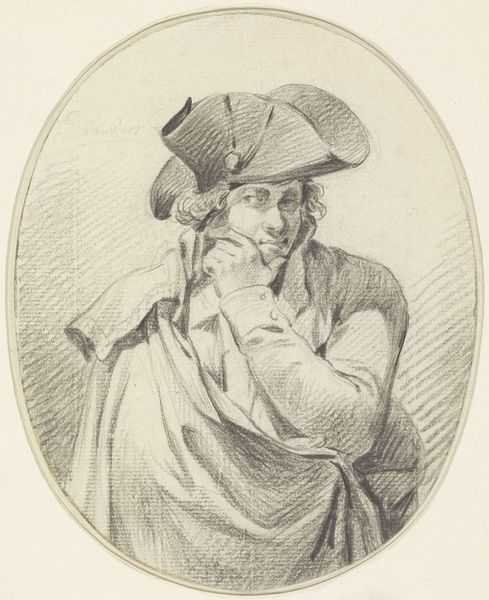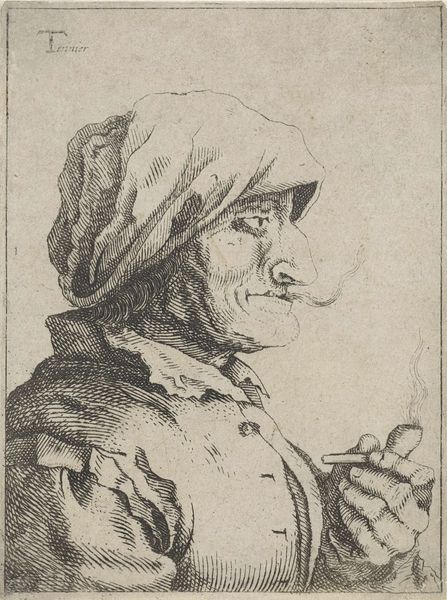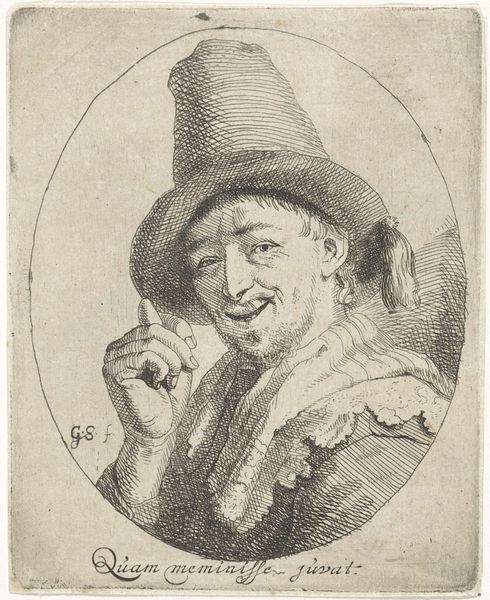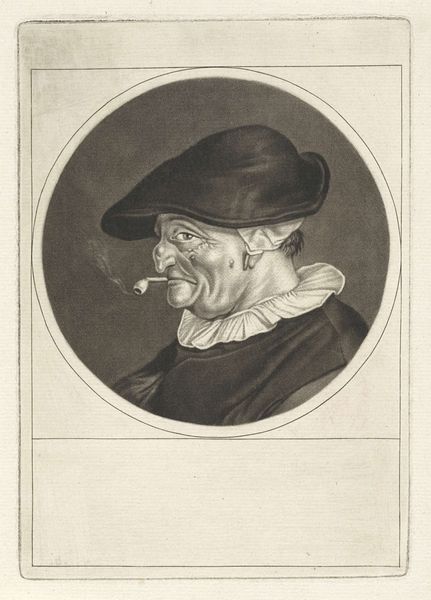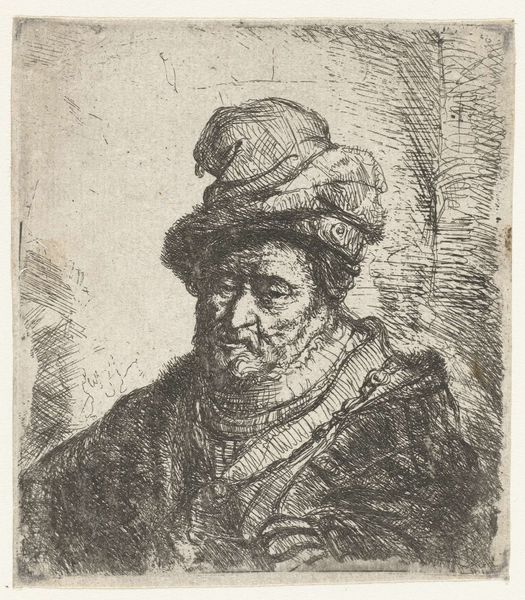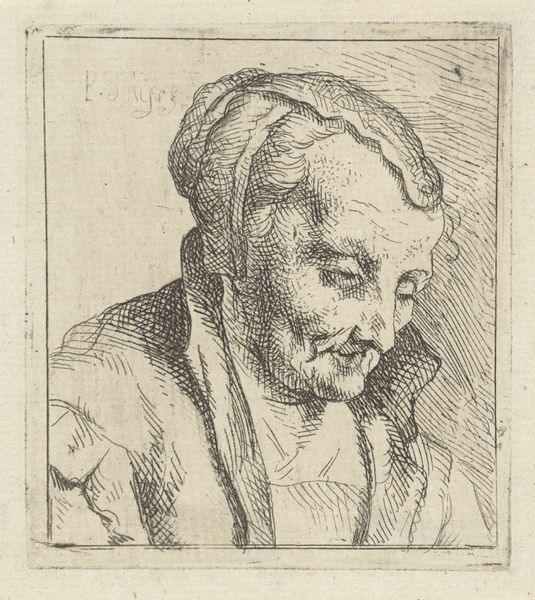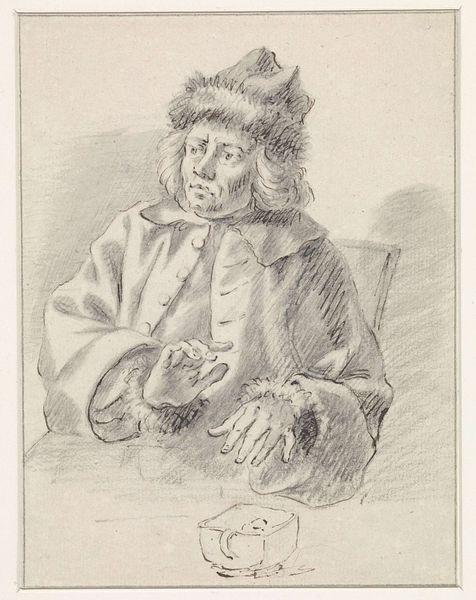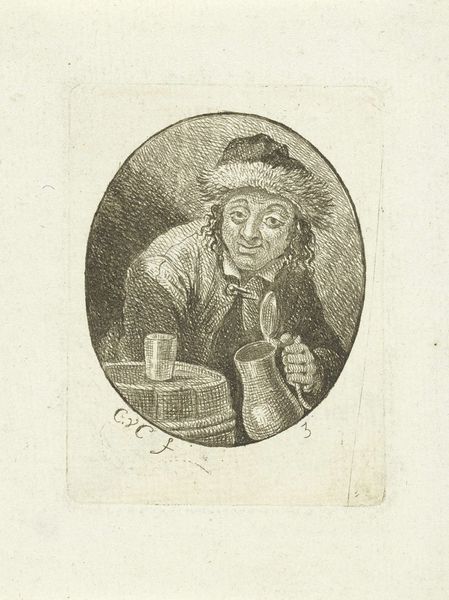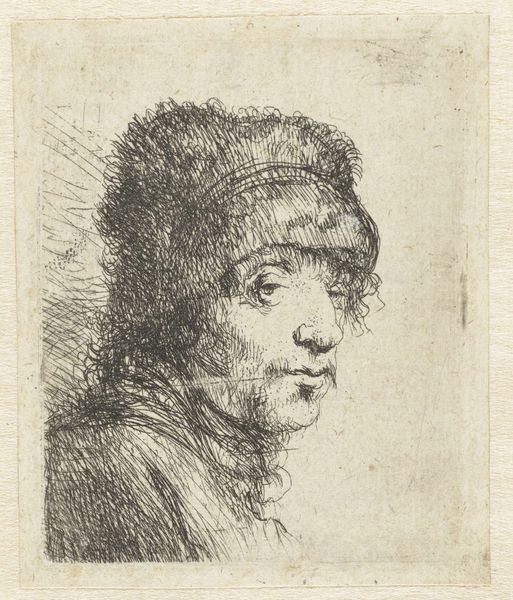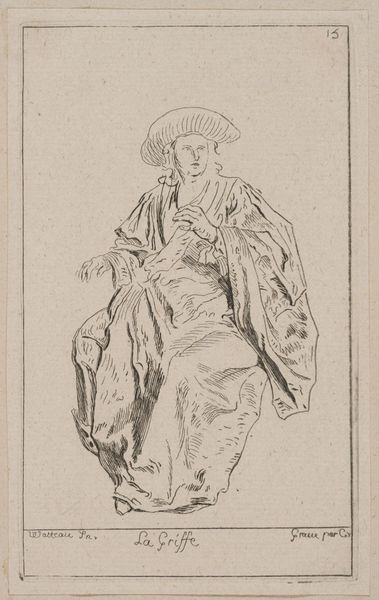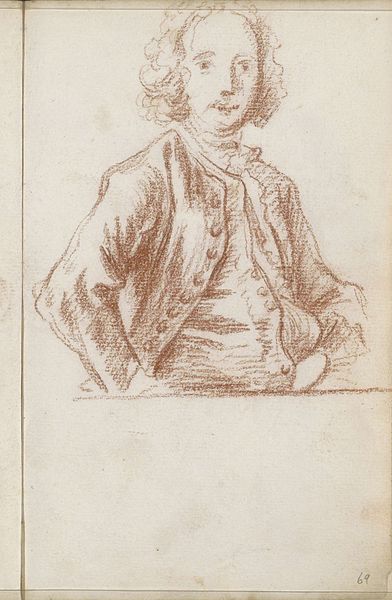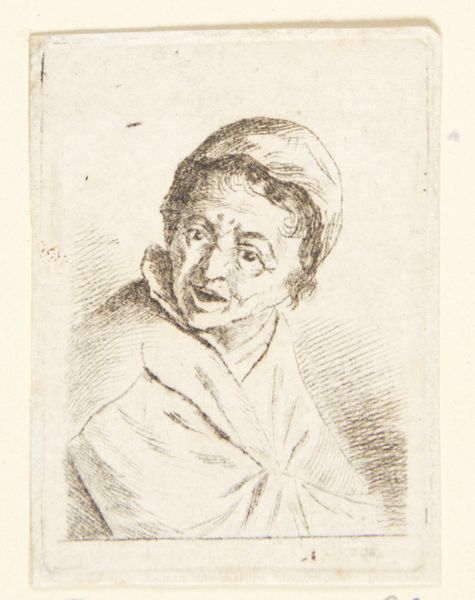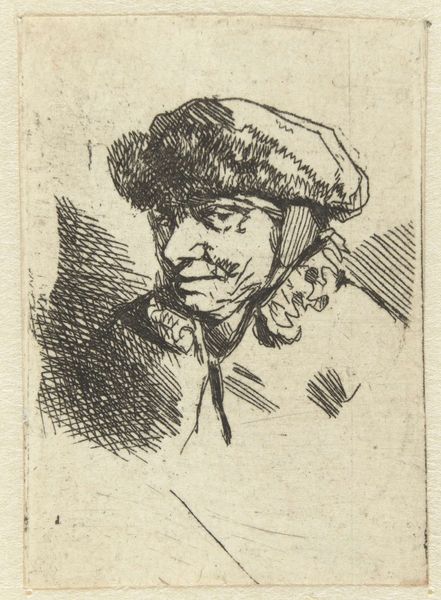
drawing, etching
#
portrait
#
drawing
#
facial expression drawing
#
baroque
#
etching
#
figuration
#
portrait reference
#
line
#
portrait drawing
Dimensions: height 111 mm, width 94 mm
Copyright: Rijks Museum: Open Domain
Editor: We’re looking at Jan Stolker’s "Portret van een man met baret," created sometime between 1734 and 1785. It's an etching, currently held at the Rijksmuseum. There’s a real humanity in this quick sketch, even a touch of weariness, that makes me curious about the subject. What stories do you think are embedded in an image like this? Curator: This portrait resonates with a profound connection to imagery from earlier periods. The loose cap, the almost caricatured features… they harken back to the tradition of the "tronie," a popular subject in Dutch Golden Age painting. These weren’t meant to be realistic portraits of individuals as such, but rather studies of character, often linked to established visual symbols. Look at the placement of the hand on the head. Where else have you seen similar depictions? Editor: I’m thinking of Rembrandt, especially. There's something about the casual pose, a suggestion of inner contemplation, that calls to mind that period. Curator: Precisely! And remember, even a ‘casual’ pose like this carries its own visual weight. Artists adopted these symbols because they were part of the culture, understood without needing explanation. The slightly downturned mouth, the furrowed brow... It’s about evoking a certain mood. Do you see in the etched lines any intentional use of contrast and shadow that emphasizes such emotional conveyance? Editor: Definitely. The lines around the eyes are much heavier, deepening the shadows and intensifying the gaze, while other parts seem lighter, giving it more air and a quicker pace overall. Curator: That’s an astute observation. Stolker taps into an entire history of emotional representation through subtle gestures. His choice to mimic established compositions places his work firmly within a cultural memory. Editor: It's amazing how much symbolic information can be packed into such a small, seemingly simple image. Curator: Indeed! We often inherit far more information from cultural images than we consciously realize.
Comments
No comments
Be the first to comment and join the conversation on the ultimate creative platform.
